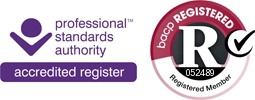Cognitive behavioural therapy (CBT) is a talking therapy that can help you manage your problems by changing the way you think and behave.
It’s most commonly used to treat anxiety and depression, but can be useful for other mental and physical health problems.
How CBT works
CBT is based on the concept that your thoughts, feelings, physical sensations and actions are interconnected, and that negative thoughts and feelings can trap you in a vicious cycle.
CBT aims to help you deal with overwhelming problems in a more positive way by breaking them down into smaller parts.
You’re shown how to change these negative patterns to improve the way you feel.
Unlike some other talking treatments, CBT deals with your current problems, rather than focusing on issues from your past.
It looks for practical ways to improve your state of mind on a daily basis.
Uses for CBT
CBT has been shown to be an effective way of treating a number of different mental health conditions particularly depression and anxiety. In addition to depression or anxiety disorders, we also offer CBT for:
- eating disorders – such as restricted eating and bulimia
- obsessive compulsive disorder (OCD)
- panic disorder
- phobias
- sleep problems – such as insomnia
- problems related to alcohol misuse and addictions
Long term health conditions and chronic pain, such as:
- irritable bowel syndrome (IBS)
- chronic fatigue syndrome (CFS)
- fibromyalgia
Although CBT cannot cure the physical symptoms of these conditions, it can help people cope better with their symptoms and the impact on their daily life.
What happens during CBT sessions
If CBT is recommended, you’ll usually have a session with your therapist once a week or once every 2 weeks.
During the sessions, we’ll work together to break down your problems into their separate parts, such as your thoughts, physical feelings and actions. We will analyse these areas to work out if they’re unrealistic or unhelpful, and to determine the effect they have on each other and on you.
We are then able to help you work out how to change unhelpful thoughts and behaviours. After working out what you can change, you will be asked to practise these changes in your daily life and you’ll discuss how you got on during the next session.
The eventual aim of therapy is to teach you to apply the skills you have learnt during treatment to your daily life. This should help you manage your problems and stop them having a negative impact on your life, even after your course of treatment finish
Is CBT right for me?
Cognitive behavioural therapy (CBT) can be as effective as medicine in treating some mental health problems, but it may not be successful or suitable for everyone.
Some of the advantages of CBT include:
- it may be helpful in cases where medicine alone has not worked
- it can be completed in a relatively short period of time compared with other talking therapies
- the highly structured nature of CBT means it can be provided in different formats, including in groups, self-help books and apps (you can find mental health apps and tools in the NHS apps library)
- it teaches you useful and practical strategies that can be used in everyday life, even after the treatment has finished
Some of the disadvantages of CBT to consider include:
- you need to commit yourself to the process to get the most from it – a therapist can help and advise you, but they need your co-operation
- it may not be suitable for people with more complex mental health needs or learning difficulties, as it requires structured sessions
- it involves confronting your emotions and anxieties – you may experience initial periods where you’re anxious or emotionally uncomfortable
- it focuses on the person’s capacity to change themselves (their thoughts, feelings and behaviours) – this does not address any wider problems in systems or families that often have a significant impact on someone’s health and wellbeing
For more detail on different types of therapy, visit the BACP A-Z of therapeutic approaches.




